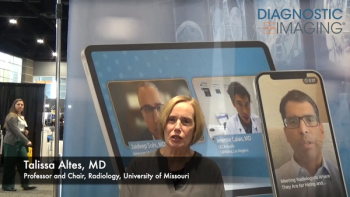
Sun follows up workstation releases with launch of new storage offerings
Sun follows up workstation releases with launch of new storage offeringsVendor targets RAID-only storage networks for PACSSun Microsystems is not planning to lose ground in any of its market segments without a fight. Several weeks after
Sun follows up workstation releases with launch of new storage offerings
Vendor targets RAID-only storage networks for PACS
Sun Microsystems is not planning to lose ground in any of its market segments without a fight. Several weeks after debuting a new line of low-cost, Unix-based workstations (PNN 2/98), the Mountain View, CA-based vendor released StorEdge, a family of Unix-based hardware and software storage products that Sun believes will have particularly strong application in PACS networks.
StorEdge features a number of new developments for Sun, including what it calls an intelligent storage server architecture. With this architecture, end users can have their entire storage capacity available online with redundant arrays of inexpensive disks (RAID), said Bruce Elder, healthcare industry manager. While RAID arrays offer users speedy online access to images, they have typically been employed only for short-term archiving applications due primarily to pricing concerns. As a result, other media, such as digital linear tape and optical disks, have been commonly used for long-term, off-line archiving.
Costs for RAID arrays have dramatically decreased, however. In fact, Sun believes that the use of RAID arrays to meet all of the customer's medical image storage needs will grow in the future, to the point where they support terabyte-level archives.
"It's cheap enough now that you can afford to archive to magnetic disk rather than some off-line archive, particularly when you look at their benefits compared with robotic or jukebox assemblies, which have maintenance issues," Elder said. "The price-to-performance ratio on disks is unbelievable these days."
To allow users to take advantage of the lower price of RAID arrays, Sun's intelligent storage server can connect with multiple arrays, enabling purchasers to build up large storage capacities in a building-block fashion. With the Sun model, RAID arrays, just like client computers, are considered devices on a network. As a result, any kind of platform, whether it be Sun Solaris, Windows NT, or otherwise, could access the RAID arrays. The use of a fiber channel backbone also allows for speedy access to the archived data, Elder said.
Intelligent storage servers employ a Unix symmetric multiprocessor that runs a full operating system to control storage functions. Sun believes that with the intelligent storage server architecture, however, customers can take advantage of the benefits of RAID for all of their archiving needs.
"What we've done essentially is put a dedicated disk array storage server between the host computer and the disk arrays," Elder said. "The storage server acts like a network switch, allowing you to plug in as many disk arrays as you want because you can add multiple storage servers."
Search again Homepage
Newsletter
Stay at the forefront of radiology with the Diagnostic Imaging newsletter, delivering the latest news, clinical insights, and imaging advancements for today’s radiologists.




























